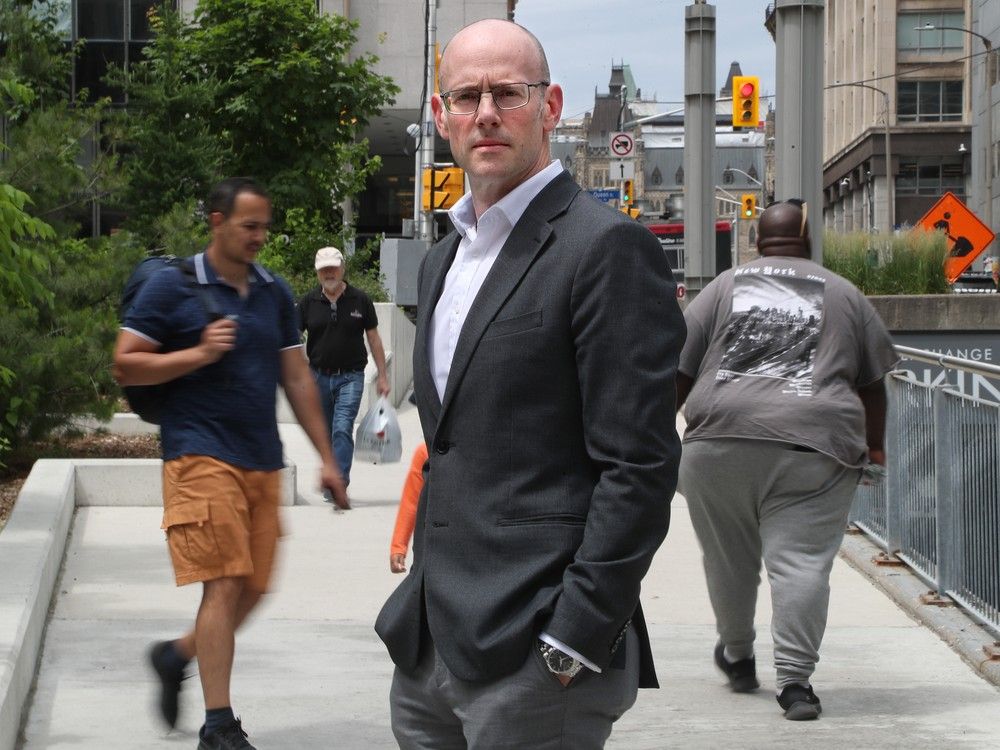Almost half of the job losses that could come from
Prime Minister Mark Carney’s public service cuts
would be in the National Capital Region, according to a new analysis from a left-leaning think tank.
In the analysis from the Canadian Centre for Policy Alternatives,
economist David Macdonald found that around 45 per cent, or the equivalent of 24, 421 full-time jobs
could be lost from the cities of Ottawa and Gatineau.
In total, job losses across the federal public service
could add up to a cumulative total of 57,000 full-time equivalents by 2028, according to the analysis. A full-time equivalent, or FTE, is a measure that represents the amount of work a full-time employee does over the course of a year.
In early July, Finance Minister François-Philippe Champagne reportedly sent letters to ministers asking them to find 15 per cent in savings in their departments over three years, kicking off a spending review that Carney promised during the election. However, he also promised to
“cap, not cut” the size of the public service.
Macdonald told the Ottawa Citizen there are ways to find 15 per cent in savings without layoffs, but that would involve cutting transfer payments to First Nations, veteran services, international aid, research and more.
“You could cut those and save more staff,” he said. “It’s a bit of a Faustian bargain.”
While Macdonald found that Ottawa and Gatineau would “bear the brunt” of public service cuts, he said that around 7,812 jobs could be lost in the rest of Ontario, or 14 per cent of overall losses. Meanwhile, job losses in Quebec, excluding Gatineau, could amount to an additional 5,926 jobs or 11 per cent of full-time equivalent losses.
“It’s a stiff price to pay for major military spending and more tax cuts,” Macdonald wrote in his analysis.
Rola Salem, a spokesperson for the Treasury Board, said that no decisions on savings have been taken yet.
“The Government’s recently announced Comprehensive Expenditure Review requests that all departments bring forward savings proposals by targeting programs and activities that are underperforming, not core to the federal mandate, duplicative, or misaligned with government priorities,” Salem said in an emailed statement.
In his analysis, Macdonald said that the hardest hit departments could be the Canada Revenue Agency (CRA), Employment and Social Development Canada (ESDC) and Immigration, Refugees and Citizenship Canada (IRCC).
The
CRA’s recent job losses of around 7,000
could double to 14,277, according to the analysis.
Meanwhile, for ESDC, full-time job losses could be 2,000 next year with that number doubling to more than 4,000 by 2028. The losses could impact services such as employment insurance and Canadian pension plan payments.
IRCC, which already shed 1,944 jobs,
is set to double that to 3,847 in three years time.
For Macdonald, there is no way to cut 15 per cent of departmental budgets without impacting services. He said that there is a cyclical trend of the federal government cutting down the size of the public service, only to rehire later to curtail public frustration with poor service delivery.
“It’s definitely cheaper to make people wait online for eight hours,” Macdonald said in an interview. “It’s definitely cheaper for the federal government. (It’s) terrible for Canadians and businesses trying to get tax advice, but it’s cheaper.”
The size of the federal public service grew significantly during the government of then-prime minister Justin Trudeau until there was a reduction in the last fiscal year. There were 357,965 workers in the federal public service in 2025, according to the most recent data released by the Treasury Board, down from 367,772 the year before.
In his letters, Champagne reportedly asked ministers to find savings of up to 7.5 per cent next fiscal year, 2.5 per cent the year after and 5 per cent in the 2028-29 fiscal year, adding up to a total of 15 per cent.
A few federal organizations were spared by the exercise, including the offices of the auditor general, parliamentary budget officer and the Supreme Court of Canada.
The Royal Canadian Mounted Police, Canada Border Services Agency and the Department of National Defence were
all given a more modest savings target of 2 per cent over three years.
Crown corporations have also been asked to find savings to help Carney’s government reach the promised $25 billion in savings in the Liberals’ platform from the recent election campaign.
Our website is your destination for up-to-the-minute news, so make sure to bookmark our homepage and sign up for our newsletters so we can keep you informed.
Related
- ‘Worst cuts to the public service in modern history’ could be on the horizon, says report
- What will Carney’s 15 per cent cut mean for the public service?



